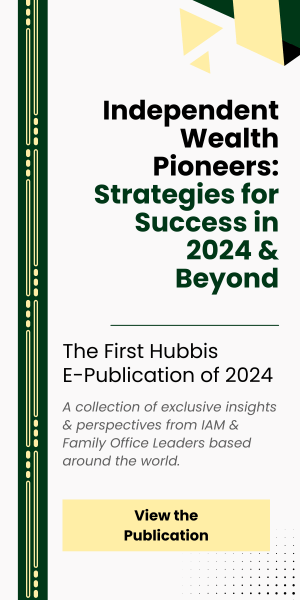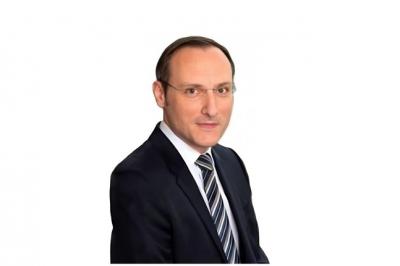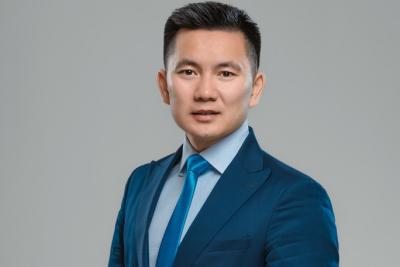ETFs – Their Value to Wealth Managers & Advisors and their Role in Private Client Portfolios

Jun 11, 2023
The Hubbis Digital Dialogue panel discussion of May 18 focused on the global USD10 trillion-plus Exchange Traded Fund (ETF) market and the rising prominence of ETFs in the wealth management community in Asia. The panel analysed how ETFs can be used as part of smart and robust portfolio formation by private investors, and how the private banks and EAMs can help their clients diversify their portfolios using ETFs.
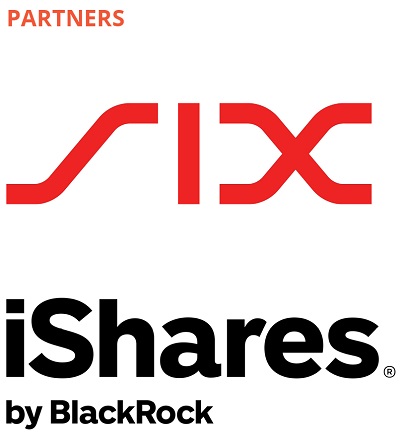
The Panel
- Wee Lynn Low, Fixed Income Index Product Strategy, BlackRock
- Jason Gibbons, Investment Director, Asia, Leo Wealth
- Paul Gambles, Director, MBMG Group
- Isaac Poole, Global Chief Investment Officer Portfolio Manager, Oreana Financial Services
- Bernie Thurston, Chief Executive Officer, ULTUMUS, a SIX Company
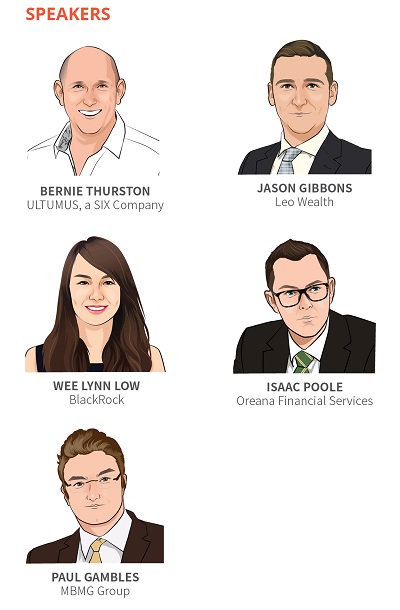
These are some of the questions the panel addressed:
- How can investors use both active and index strategies to achieve best risk adjusted portfolio outcome?
- How are digital wealth managers engaging ETFs?
- What's the role and engagement in discretionary mandates?
- How do firms scale their investment offering using ETFs?
- Are Asia’s private clients increasing their exposures via ETFs and why or why not?
- What is the wealth management community doing to promote the use of ETFs in private portfolios?
- Are ETFs useful for thematic exposures? Why and how?
- What are smart beta ETFs, and why should Asia’s private clients add these types of exposures?
- Are Asia’s investors interested only in equity ETFs or are they also buying fixed-income ETFs. Why or why not?
- How can fixed income ETFs help investors be more tactical in taking advantage of credit spreads and yields?
- Can private investors boost the ESG credentials of their portfolios using ETFs? How?
- Are private investors buying into alternative asset ETFs to easily gain exposure to precious metals or currencies and other assets?
- How can ETFs fit within advisory and discretionary mandates?
- What ETF strategies and approaches are relevant for wealthy Asian clients today?
Setting the Scene
The creators and proponents of ETFs have increasingly been emphasising the key attributes of ETFs, including the low entry and exit costs, their liquidity and ease of trading (they are quoted on the market like stocks and not ‘priced’ only once a day like mutual funds). They have been highlighting their role in core/satellite portfolio formation, as well as their value in offering investors smart beta and targeted thematic exposures through specifically tailored composition around selected indices and sub-sectors.
In short, the right blend of ETFs can allow private investors to assemble a diverse, liquid and interesting sets of exposures across the universe of listed equities and also public-market fixed income. And the ETF market also encompasses the growing inclination to invest in alternative assets, including metals, commodities, and currencies.
The panel zoomed in on how the wealth community can help investors invest in specific trends that can be captured through tailored ETFs, such as for example China’s technology sector, global medical and healthcare, or perhaps country-specific ETFs such as Vietnam, or segment-specific ETFs in fixed income, or even thematic-type ETFs such as healthcare leaders, Asian innovators, and so forth. They will analyse how ETFs can also help investors easily capture the global trends towards ESG and sustainability.
The discussion was naturally directed towards the Asian wealth management community, to debate where such ETFs fit into private client portfolios in the region, and how those clients should build their allocations.
And the panel discussed why and where these investors most need considerable guidance and support, faced as they are with an enormous array of choices – there were an estimated roughly 8754 ETFs at the end of 2022 representing some USD10 trillion of assets, according to Statista. By comparison almost 20 years ago that equivalent number was 276, and by 2008 when the global financial crisis struck, the figure stood at around 1600.
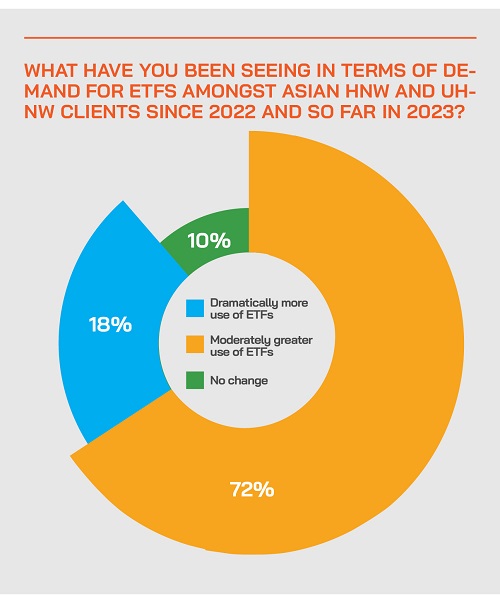

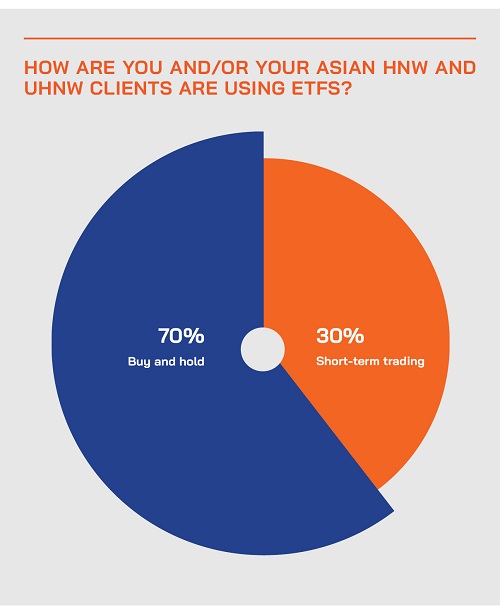


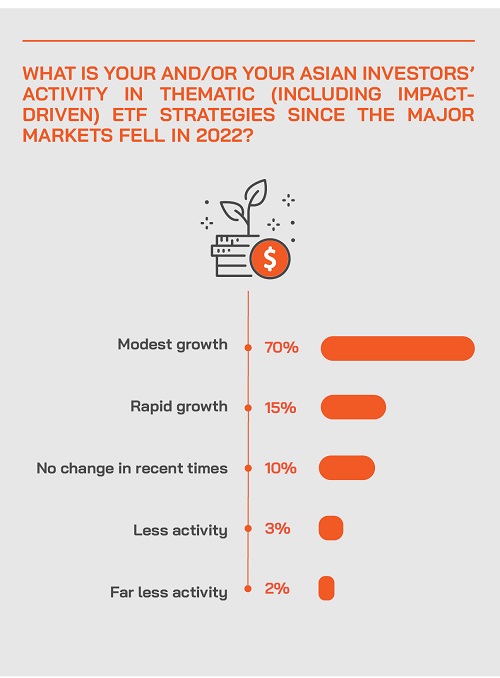
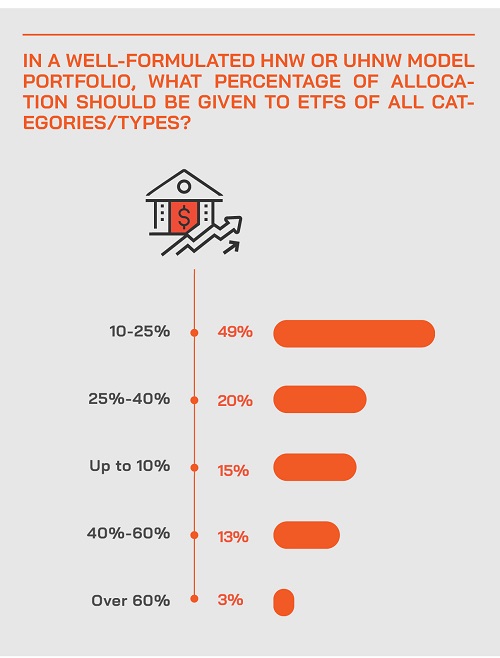
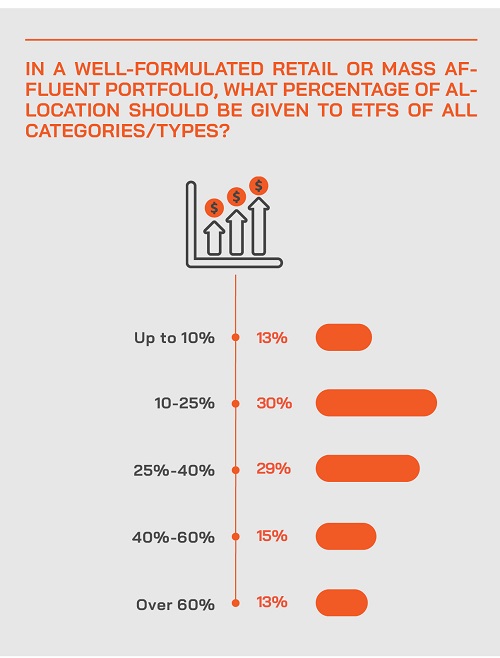
Key Insights & Observations from the Panel:
ETFs and the evolution and diversification of their use in private client portfolios
“ETFs have become increasingly indispensable for us [as a private wealth manager] with our clients,” an expert explained, opening the dialogue. “We use ETFs in a variety of ways for our clients – to manage costs, to get access to specific markets or themes, and to manage dynamic and tactical allocations through the cycle.”
He said ETFs help significantly with smart asset allocation and portfolio construction, and ETFs can give a relatively cheap exposure to a beta. “And ultimately,” he added, “if we think of it as an asset class that does not have much alpha, then you are getting the type of returns that you expect, and the type of returns that your client expects, so there's no sort of dissonance or misunderstanding there.”
Nevertheless, he explained that in recent years, ETFs have moved from just being passive index-type opportunities to active ETFs, thematic ETFs, delivering much more niche exposures. As an example, he cited a very specific part of the US Treasury yield curve that can now be reached using ETFs. “That is just one example of what have been major developments in the way we can employ ETFs today, “ he told guests.
And as to growth, the prospects are immense. “We are predicting that by 2030, the total fixed income ETF AUM would hit USD5 trillion, and we are now a little bit shy of USD2 trillion,” an expert reported. “There really is massive growth ahead.”
All sorts of advantages in terms of cost, ease of access and trading and even tax transparency
Another expert agreed, noting that ETFs help with controlling costs, are tax transparent, they are easy to access and trade, and they help build diverse global portfolios that would otherwise be available only in much larger client portfolios. “For EAMs, these are great tools for ease of allocation that reflects the increasing internationalisation of private portfolios,” he said.
And there is plenty of liquidity is available in ETFs, a guest reported. “ETFs have stood the test of time associated with giving people the capability of getting in and out in very short order, even during volatile markets,” he said.
The active progress of passive funds as ETFs diversify and increasingly reflect thematics and increasingly offer very tailored exposures
ETFs, to some extent, have been shunting active managers aside, another expert reported. “By using ETFs, you can construct the core part of a 60-40 or 70-30 type portfolio that reflect a whole range of risk profiles for your clients in the market effectively,” he said. “And that gives them no sort of real major surprises in terms of relative under or outperformance but also at a reasonable cost.”
And then he said there is a lot more thinking about exposure to satellites around that core, that can give clients exposure to more interesting thematics and more niche or specialised ideas, perhaps private equity, smaller geographies, commodities, gold, digital assets and so forth.
“For us,” he reported, “we've found that to be a really useful way to interact with clients sort of telling them not to focus so much on that core holding, it's going to do what it's going to do, let's look at how we can manage risk and opportunity reward around that with those interesting satellites. So, it sort of gives another tool for asset allocators to use.”
A guest said he was very interested in how the actively managed funds terms some five years from now are going to be able to outperform the benchmarks, which are becoming a market in themselves.
There are sophisticated engine rooms and technicalities behind the creation and pricing of ETFs
An expert whose firm provides and handles specialised ETF and Index data commented. He said they provide a singular focus on offering a real choice to trading desks, enterprise data groups, asset managers, and hedge funds. Their API feed technology is backed by client support that offers validated and enriched ETF or Index data. Their focus is on being the best provider of this type of data in the industry.
Looking at key trends, this expert said that to facilitate the diversification of people's portfolios, it is remarkable how quickly the ETF industry adapts, and increasingly rapidly offers exposures to niche sectors and industries, delivering diversification of assets, and for a very low entry and exit price. He said there are numerous and ever more specialised ETFs offering all types of thematic exposure access.
Fixed income ETFs now shine brighter in what is becoming a more normalised financial markets environment, and one very different from the past 12-15 years since the GFC first struck
Another guest concurred, adding that with the current chaos in markets right now, fixed-income ETFs offer access to yield and liquidity. “We call it the great yield reset, the fact that bonds are back, and investors are generally using bond ETFs to access what we call the generational opportunity in fixed income,” they explained.
“We see huge flows into fixed income ETFs, with an estimated 50% into different parts of the US Treasury ETFs offering different duration exposures, depending on their outlook. People are still buying US Treasuries, the only difference now is investors are extending duration, which makes sense, if you think about the possibility of rates peaking in this hiking cycle.” They added that Asian investors need more education on how they can use fixed-income ETFs,
Reaching parts of the market that were hitherto more difficult to reach for many investors
The panel also discussed how ETFs can offer liquid access to more illiquid assets. For example, individual bonds can be difficult and costly to access and trade, whereas fixed-income ETFs aggregate bond portfolios, offering a much more liquid and far easier access point to different types of bond exposures and durations.
“Asian investors have always tended to think of bonds as hold to maturity instruments, but bond ETFs do all the amazing things like allowing people to get into the market and out of the market,” this expert observed.
“Somewhere in between,” he added, “is a term maturity type of ETF, where it sort of mimics the cash flow unlike bonds, you get like coupon payments on a frequent basis, and then principal at the end of it, which is why we see investors getting interested in these kinds of products as well because it allows them to lock in the attractive yields in fixed income that they see today as well.”
Knowledge and education are vital to help ETF flows increase, especially in Asia, where adoption is rising sharply but still lags behind major markets
Education, a guest explained, is a work in progress all around the world, but improving all the time, even in Asia. “I think we're going to have a much more educated client base, buying portfolios of very thematic and very focused ETFs,” he said, adding that there is even exposure possible to selected ETFs that comprise companies that are supporters and activists for the Paris Climate Accord, for example.
And ChatGPT is now busy creating portfolios for people with very specific functions and needs, he reported. Retail investors who are far from HNWI level will be increasingly able to create their own portfolios, just by using AI and robo advisors. “ChatGPT can now respond to individual requests advising that these are the ETFs that investors need to buy to achieve whatever aims they might have, while acknowledging that he is not yet aware of whether people are actually using that.
He explained that there is increasing demand in Australia, for example. “There is a push towards long-term views amongst the younger accumulators to think about their pensions and think about reducing the costs that they face because the cost savings compound over time in the superannuation or the pension structure and pay huge dividends in terms of overall returns,” he explained. “That’s really accelerated over the last few years.”
Do not mistake low cost for low value, you can have cheap and valuable
Another guest observed that fees and costs are coming down inexorably. “The 0.25% expense ratio that we used to think of as really great compared to the typical 1.25% you used to pay 10-15 years ago is now coming to 0.1% or less,” he reported. “It is amazing how rapidly the market responds to competition,” he said. “Even in newer Bitcoin and cryptos ETFs, levels have very rapidly headed down towards zero.”
However, he also noted that where the fees are at or near nothing, there is often a ‘sting in the tail’, something in the way the ETF has been structured. “People should be aware of that,” he said, “but in general I do love the fact that the total expense ratios of these products are heading towards zero; that is fantastic for the investor.”
How do investors discern between the good and not-so-good ETFs out of the nearly 8,800 in the market globally? Answer: Experience, due diligence and working with the best in the business
Answering this question, a pane; member explained as follows: “Linking the role of advisor or gatekeeper/asset allocator in this space, lower costs are good for clients, as long as the ETF is sustainable, durable, and not all of a sudden going to disappear.”
Asset allocators and advisors, he said, have a really important role to play still in reviewing ETFs, because they are not all the same. There are passive ETFs, there are active ETFs, and there are different providers that will have different spreads and different fees and different costs. He remarked that in all honestly, he felt that the due diligence process can be streamlined honestly if you are buying through leading global brand name providers.
But he said that in every case, the advisors need to make their own judgements and not consider that ETFs are simply a free pass. He said it is therefore critical for advisors, allocators and gatekeepers to be careful and thorough.
He added that the market of listing of the ETF also pays a key part in decisions, with withholding tax and other criteria to be included as elements. “This can be complicated, but no more so than for an active fund,” he said. “It boils down to ease of access combined with efficiency for different types of clients in different markets.”
The big players are opening up and improving access and choice, but we need to also keep or make room for the innovators and smaller ETF creators
This same expert said he is pleased to see more ETFs being listed across different exchanges. “In Australia,” he reported, “it is a limited universe so far, but we are seeing more ETFs listed there, including more global fixed-income ETFs, but the UK exchange offers considerably more very targeted fixed-income ETFs, zero to three months, one to three years that have not made their way to Australia, or even Hong Kong. The more listings there are in those markets, the more that access opens up, and it is better for everybody.”
Another panellist did however caution that the major players in the ETF market should not crowd out smaller and nice ETF providers, who are often launching some fascinating strategies.
The market ‘gorillas’, he said, have many great products, but the advisors and intermediaries should make plenty of effort to understand the new ETFs coming out of smaller shops. “We should be working hard to encourage variety and innovation, and that means more legwork,” he stated. “It is vital for the overall market and its evolution. We want to allow the investors to have the exposure to the products that they want.”




